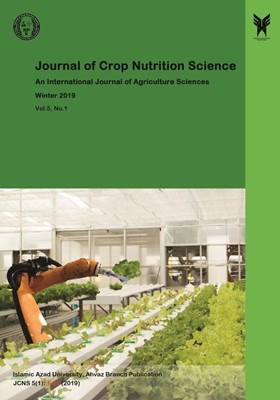-
-
List of Articles
-
Open Access Article
1 - Assess Effect of Deficit Irrigation and Super Absorbent Ploymer on Crop Production and Growth Indices of Corn under Dry and Warm Climate Condition
Mahshid Kazempor Saeid Zakernejad -
Open Access Article
2 - Evaluation Seed Yield, Its Components and Morphological Traits of Corn in Response of Consume Super Absorbent Polymers and Nitroxin
Sadegh Lamochi Tayeb Sakinejad -
Open Access Article
3 - Assessment Effect of Vermicompost on Quantitative and Qualitative Characteristics of Mung Bean (Vigna radiata L.) Under Different Irrigation Regime
Mostafa Chaharlang Alireza Shokuhfar -
Open Access Article
4 - Effect of Different level of Nitrogen and Vermicompost on Quantitative and Quali-tative Traits of Bread Wheat (Triticum aestivum L.)
Mustafa Adebifar -
Open Access Article
5 - Impact of Zinc Sulfate and Nitrogen Fertilizer on Growth Curves and Crop Production of Green Beans (Phaseolous vulgaris L.)
Mehrnosh Kermanshahi Hasan Noriani -
Open Access Article
6 - The Induction of Tolerance to Salinity Stress of Commercial Sugarcane Cultivar CP72-1312 by in Tissue Culture Condition
Zahra Khodarahmpor Seyed Ehsan Emam
-
The rights to this website are owned by the Raimag Press Management System.
Copyright © 2021-2025







